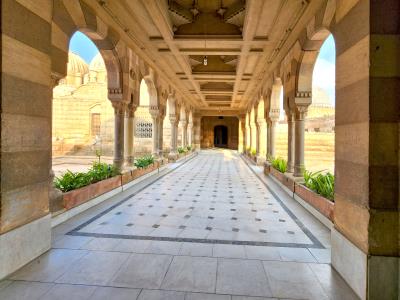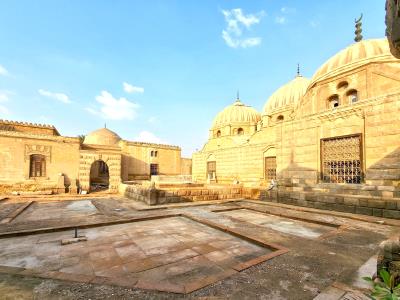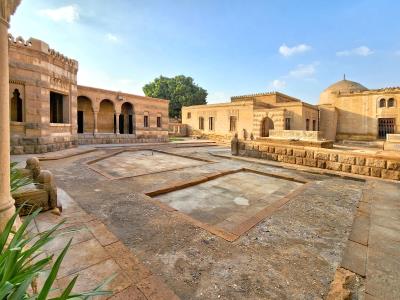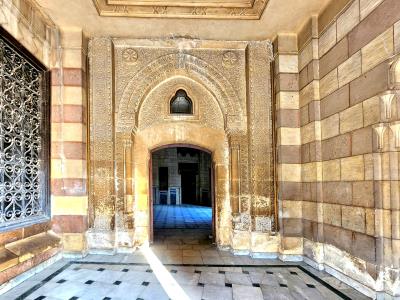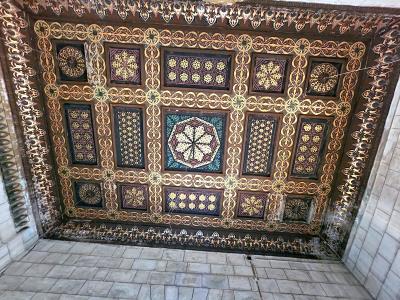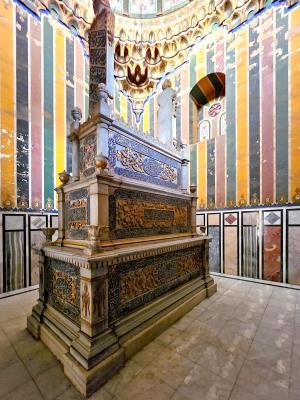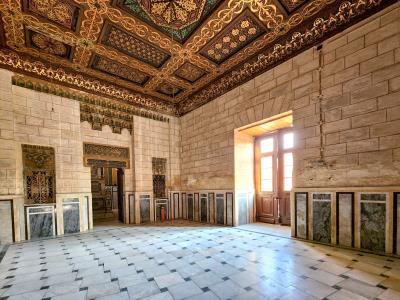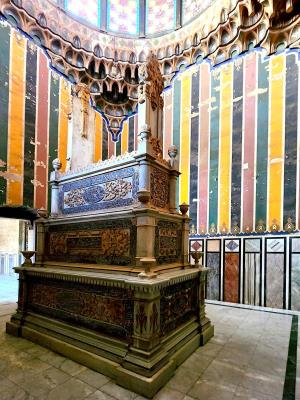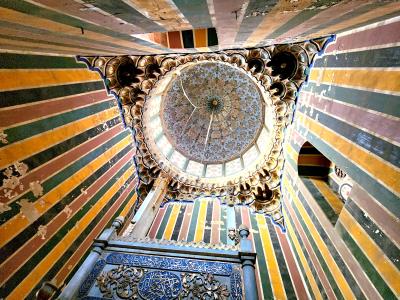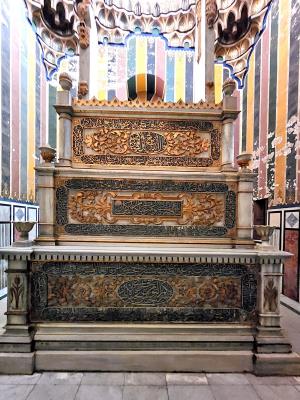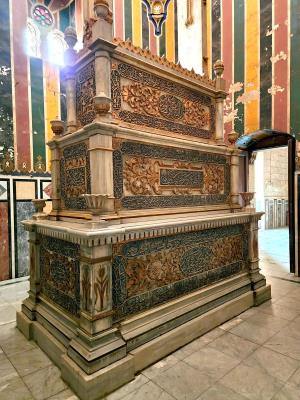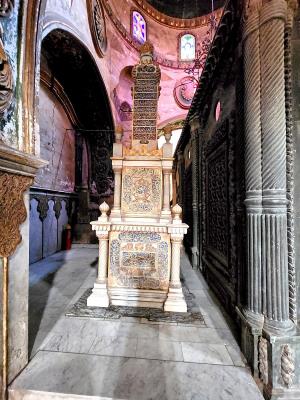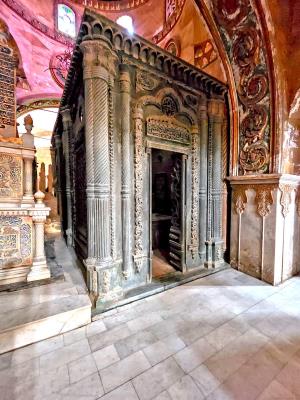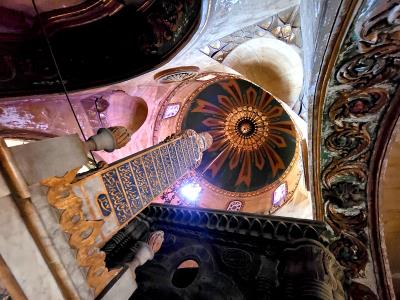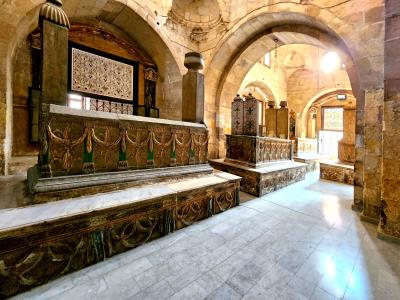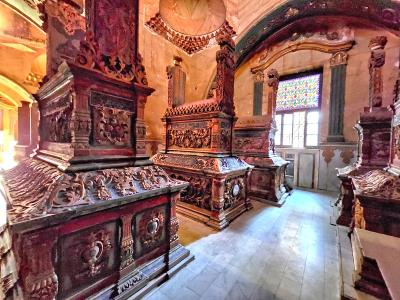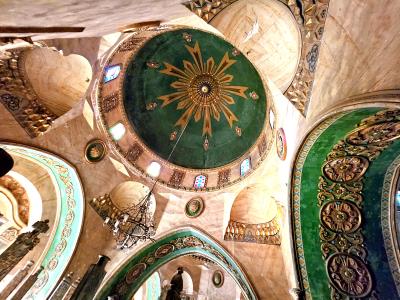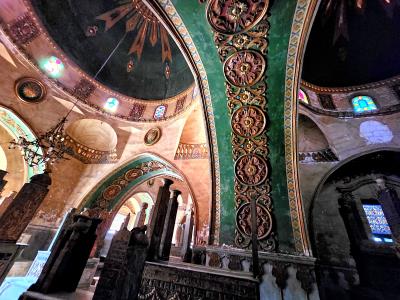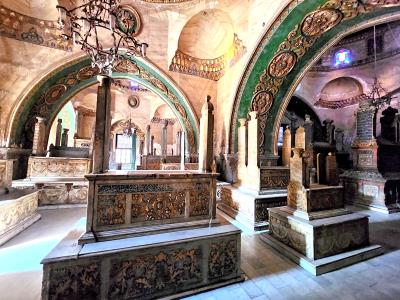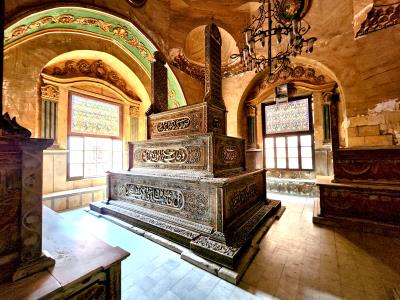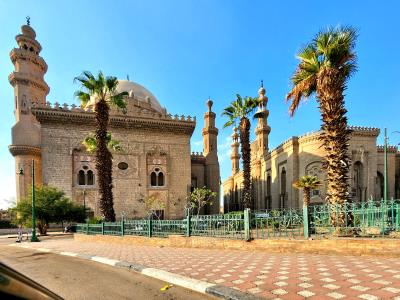Day 11 11/12/22
Egypt - Cairo
Frank's Trip
CLICK on any image to enlarge - use mouse cursor to move enlargement it if doesn't fit area
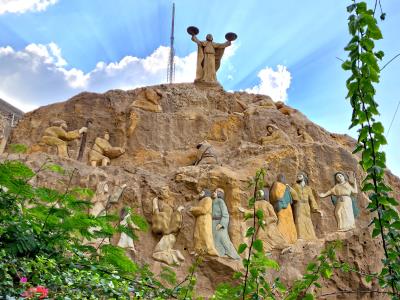
Mosques, Tombs, Trash and a Most Unusual Church ...
Today I saw some interesting sights. But I also saw the 2 most unusual I've seen on all of my trips: Garbage City and the Cave Church.
This was a long day and I amazed myself at the number of photos I shot. Some very interesting things were on my itinerary. But as you go through the page, don't stop before getting near the bottom where the basic story and pictures of Garbage City are and just below those the Cave Church... a truly unique church and an adventure to behold and wander through.
The Mosque of Sultan Hassan & The Mosque of Al-Rafa'a
These mosques are situated next to one another. In the photos below, the front facing photos has Sultan Hassan to the left and Al-Rafa'a to the right. The back view has Al-Rafa'a to the left and Sultan Hassan to the right
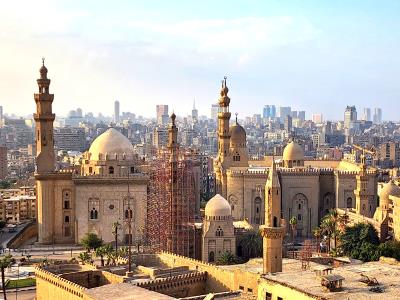
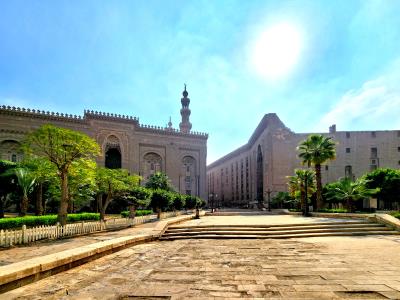
One of the finest examples of Mamluk architecture in the world, Sultan Hassan Mosque is a vision of Islamic artistry with an abundance of stalactite detailing and intricate arabesque features.
It was built in 1356-63 for the Sultan Hassan el-Nasir.
The minaret at the south corner is the tallest in Cairo at 81.5 meters.
The historian al-Maqrizi, writing in the fifteenth century, reports on the construction of the mosque, stating that the plagues that affected the population at the time did not put an end to the completion of the mosque. Because the project was executed on such a massive scale, it attracted many artisans and craftsmen from different provinces of the Mamluk empire.
Its proximity to The Citadel ultimately resulted in its use as a fort by enemies several times throughout its history. Some sultans seriously considered demolishing it because enemy armies would use the mosques high platforms to launch attacks on the citadel.
A monumental iwan opens up on each of the four sides of the interior square courtyard. An iwan is a vaulted rectangular space that is open on one side. Doorways at the four corners of the courtyard allow access into four madrasas, educational institutions, where the four Sunni Islamic schools were taught.
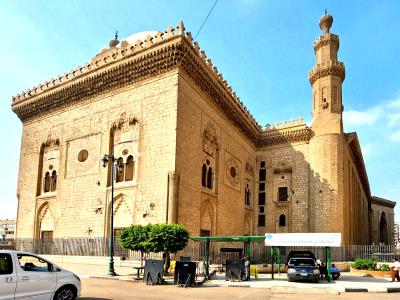
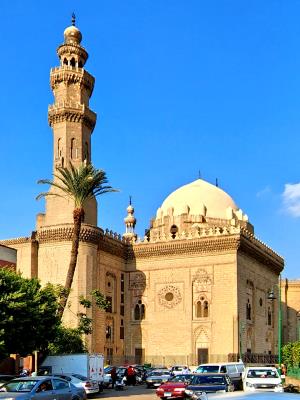
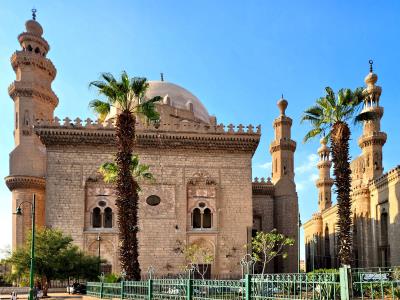
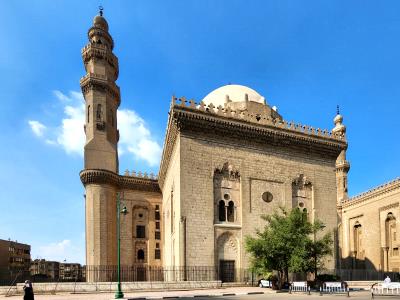
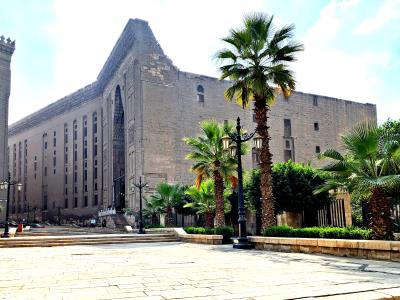
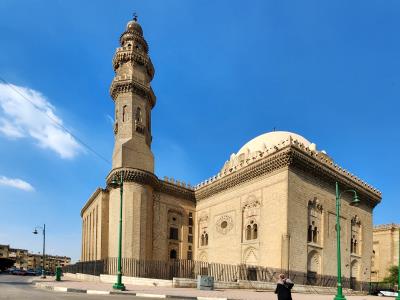
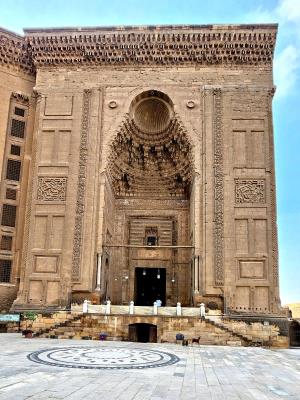
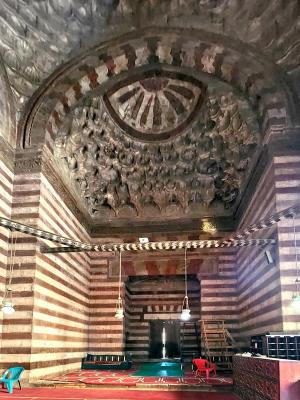
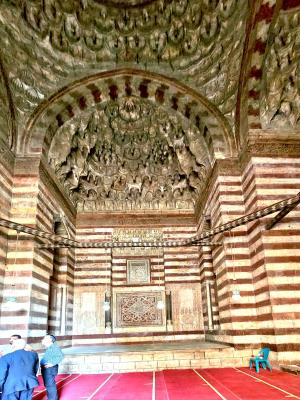
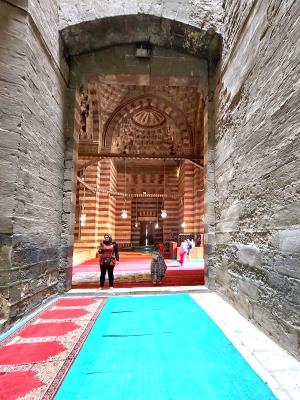
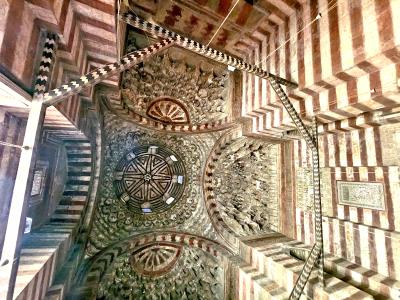
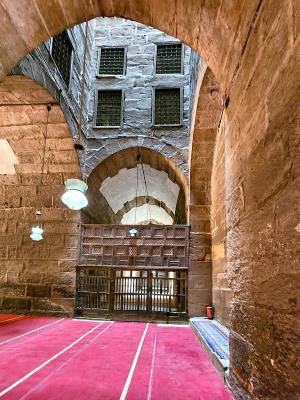
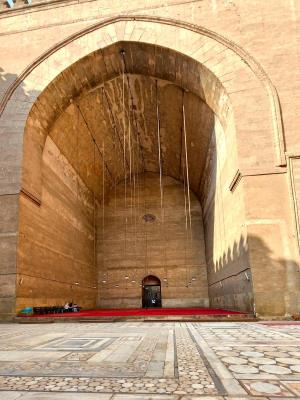
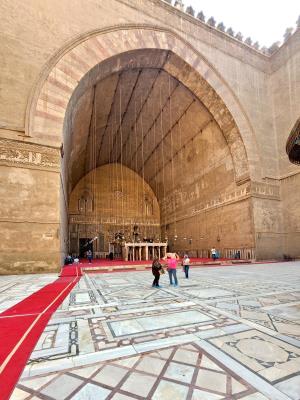
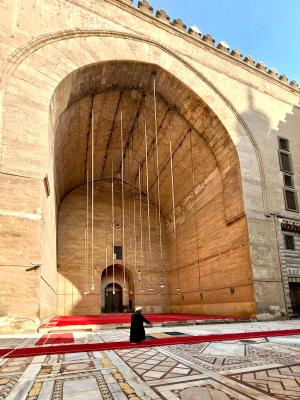
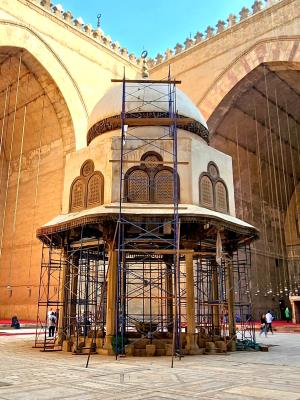
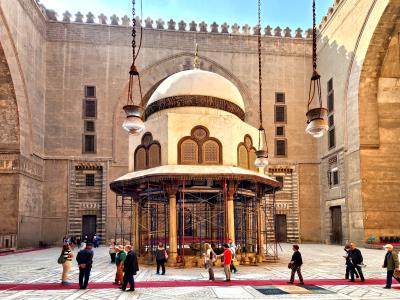
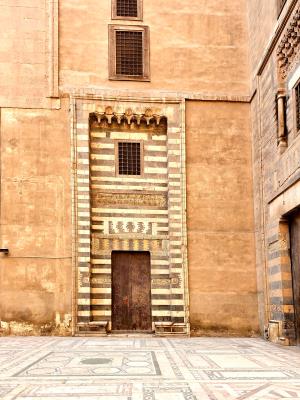
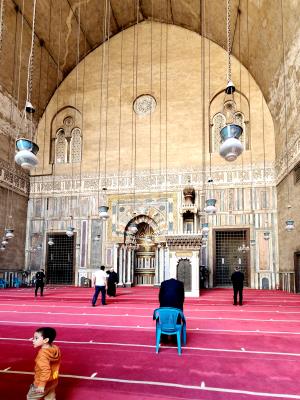
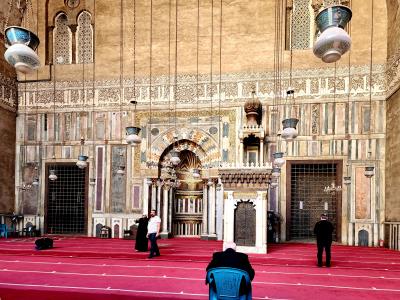
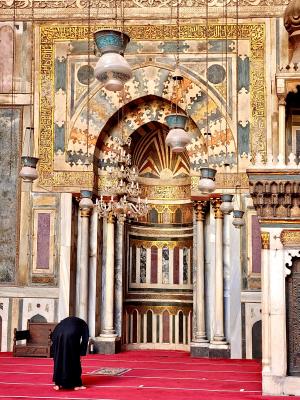
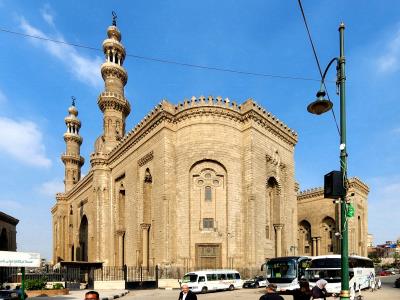
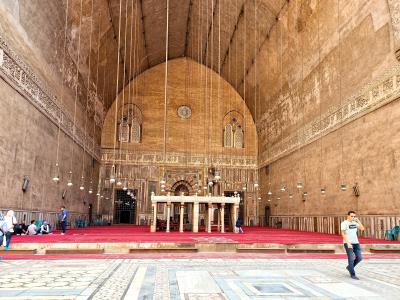
Mosque of Al-Rafa'a - Al-Rifa'i
The Al-Rifa'i Mosque was constructed in two phases over the period between 1869 and 1912 when it was finally completed. The tombs of Mohammad Ali's family lie at the northern side of the mosque.
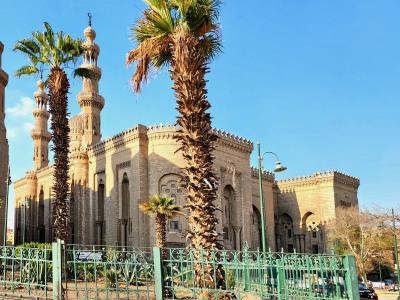
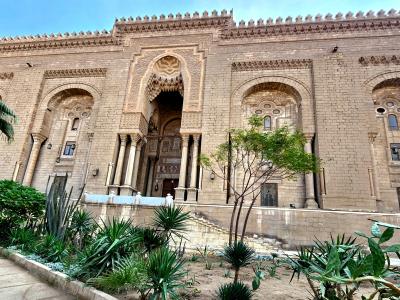
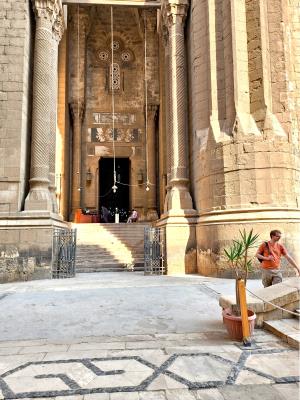
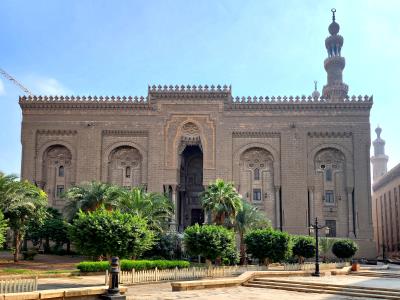
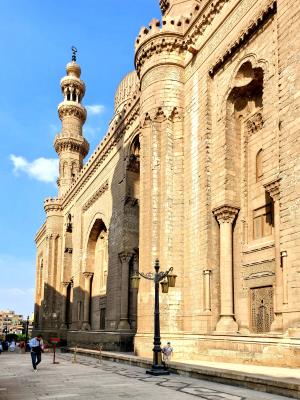
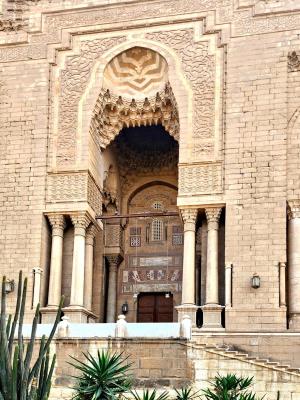
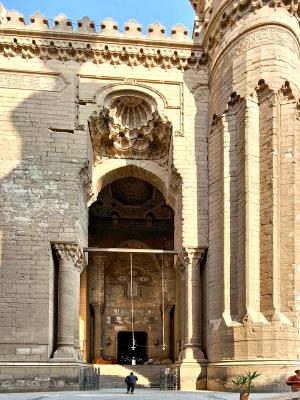
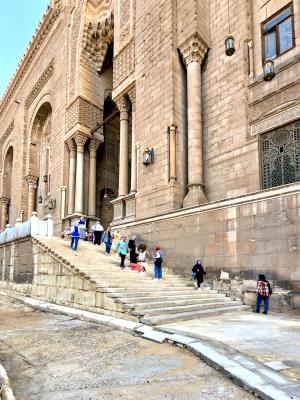
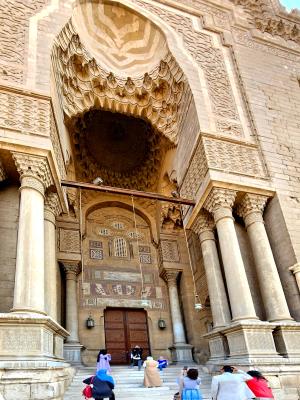
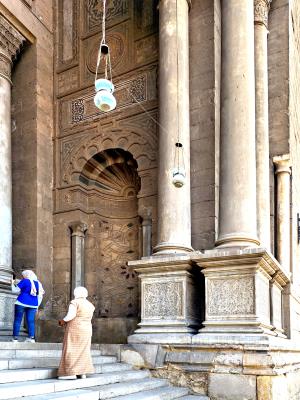
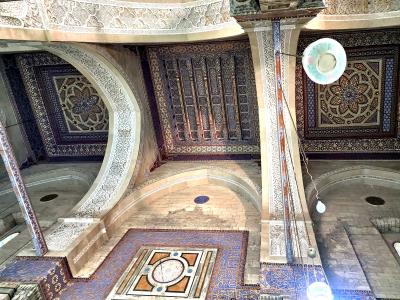
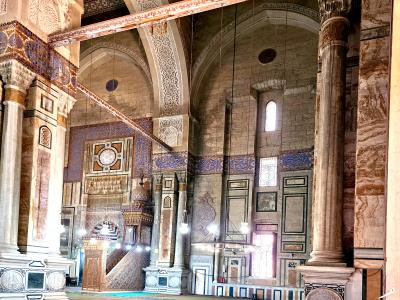
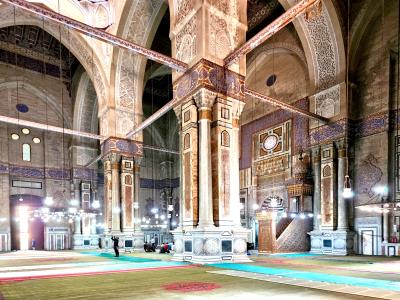
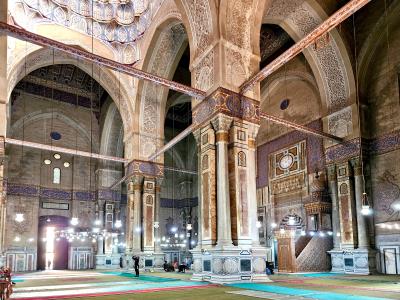
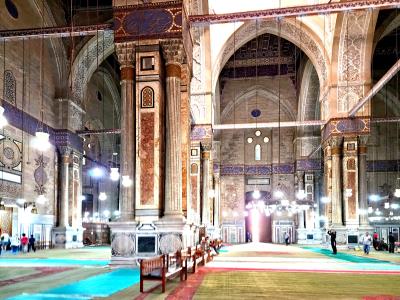
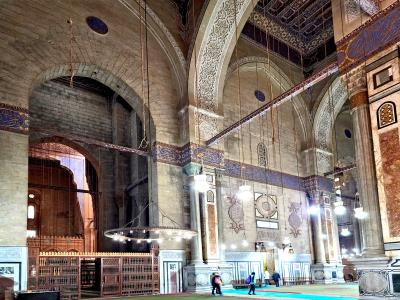
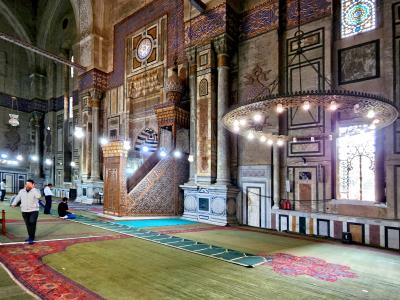
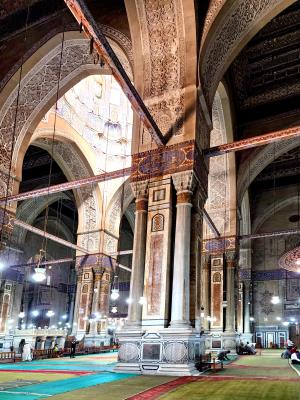
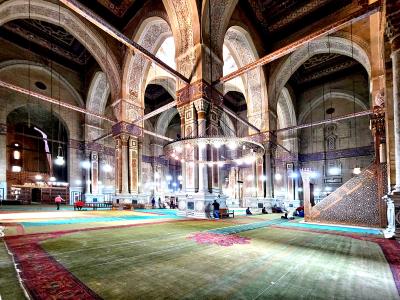
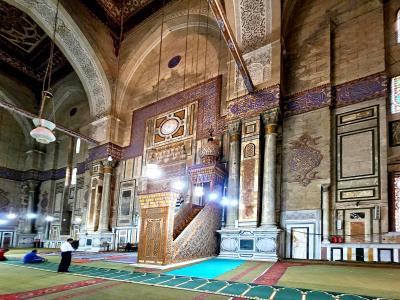
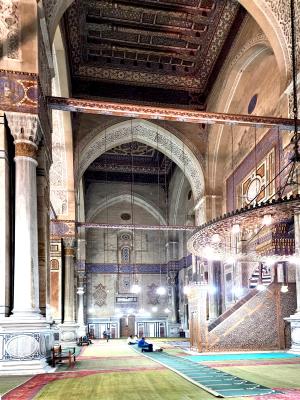
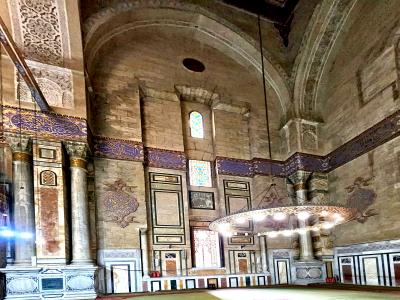
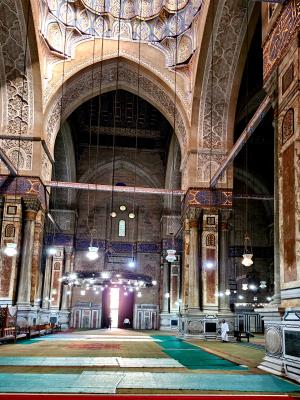
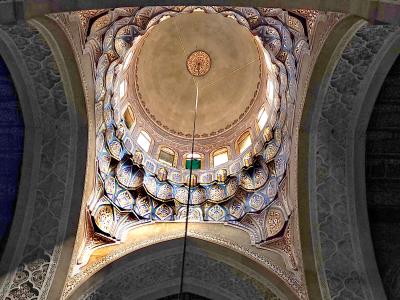
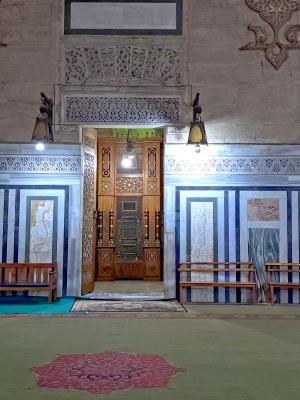
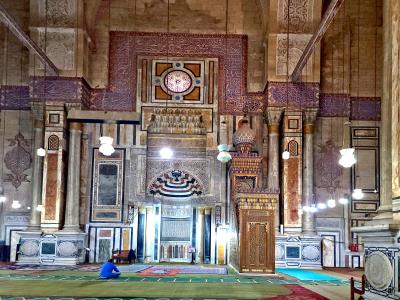
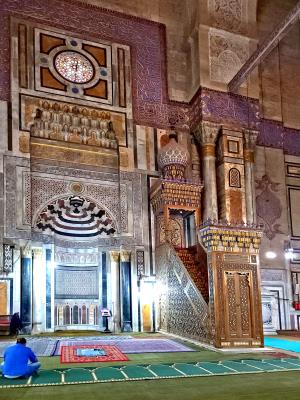
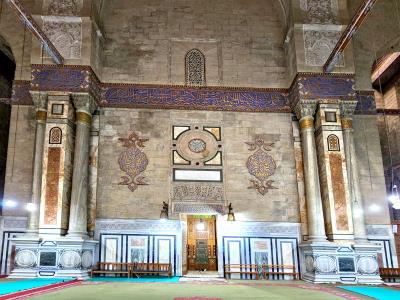
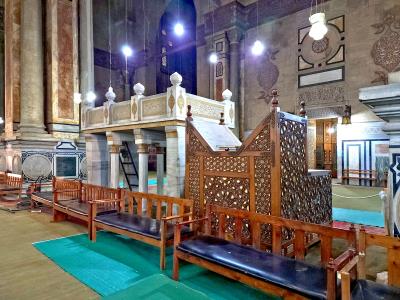
Royal Mausoleum of Muhammad Ali's Family
This is in the Al-Rifa'i Mosque. It is shown to some members of the public by a church official; a donation is expected. Dedicated to bury members of the royal family of Muhammad Ali Pasha, as Khedive Ismail, his mother Hoshiyar Hanim, Kings Fuad I, King Faruq, and Mohammad Reza Pahlavi, the last Shah of Iran. Reza Shah of Iran was buried in Al Rifa’i Mosque.
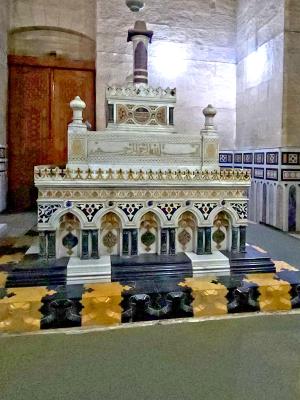
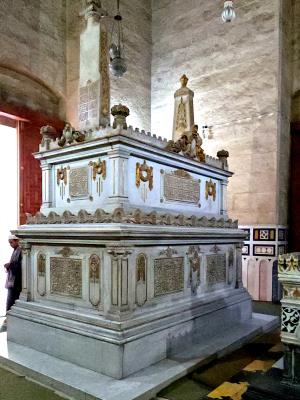
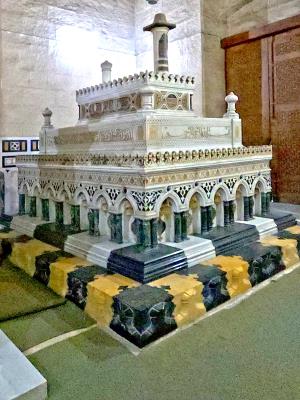
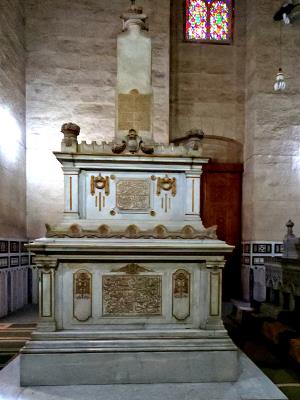
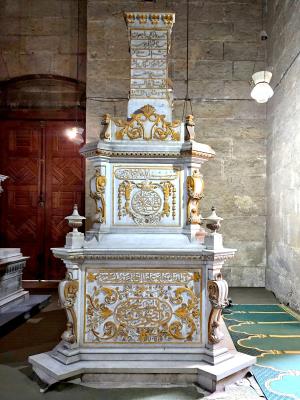
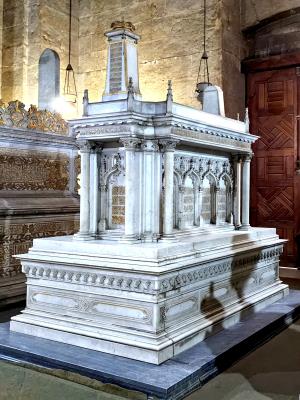
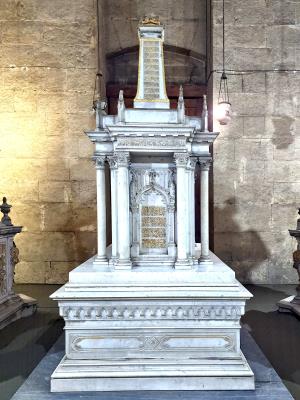
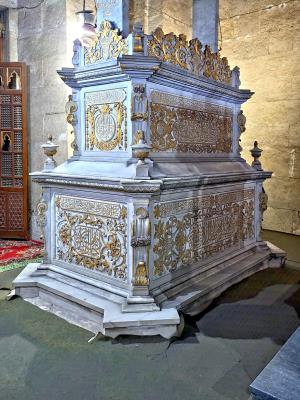
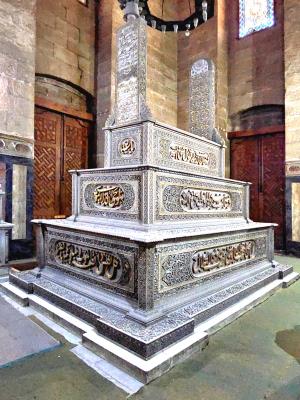
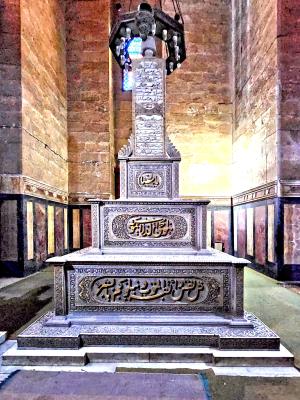
The Mosque of Ibn Tulun (Masjid Ibn Ṭūlūn) is one of the oldest mosques in Egypt as well as the whole of Africa surviving in its full original form, and is the largest mosque in Cairo in terms of land area. It is built around an open square courtyard which allows natural light to travel through. Ibn Tulun Mosque features ancient architecture styles of Egypt.
The mosque of ibn Tulun was commissioned by Ahmad ibn Tulun (935–969 AD), ‘Abbasid governor of Egypt. Construction began in 876 AD, and finished in 879 AD.
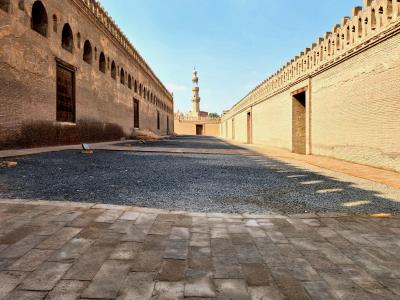
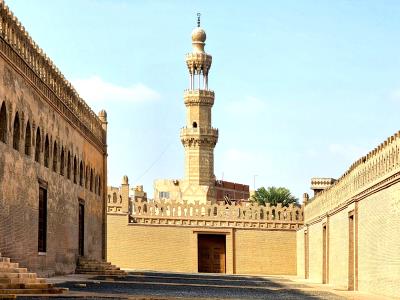
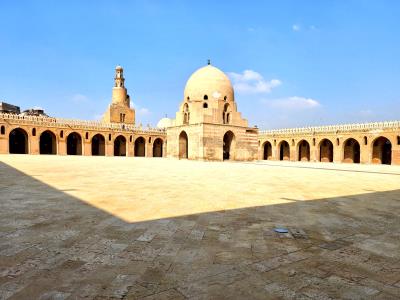
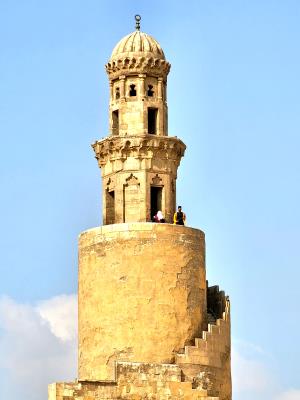
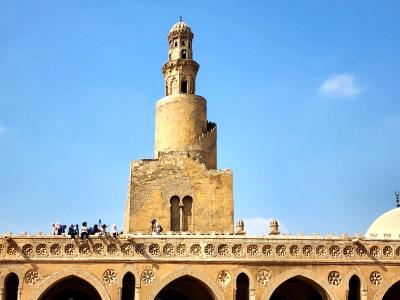
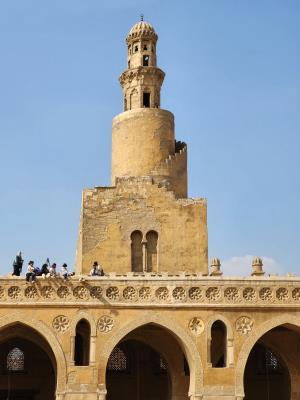
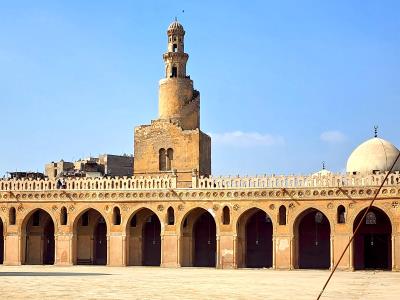
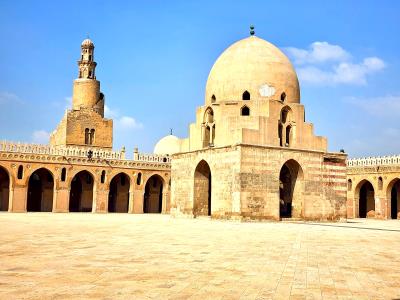
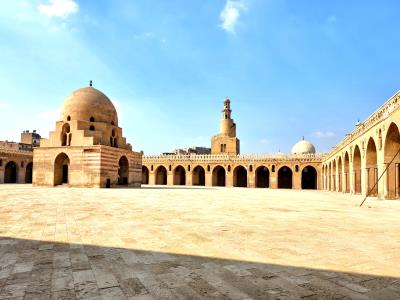
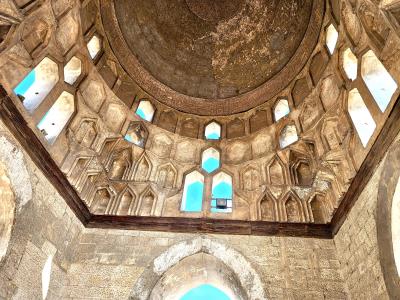
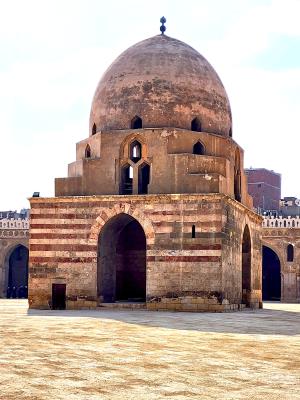
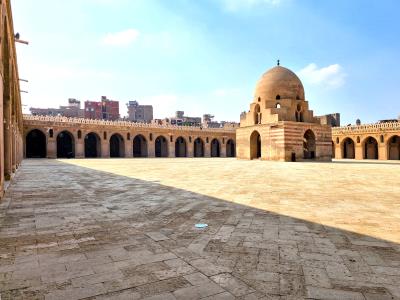
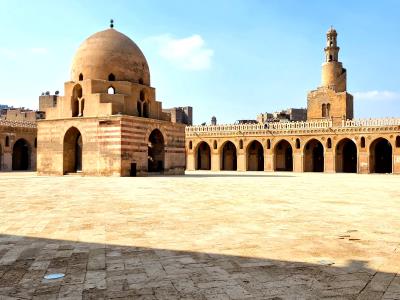
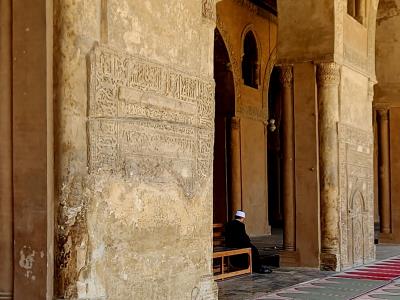
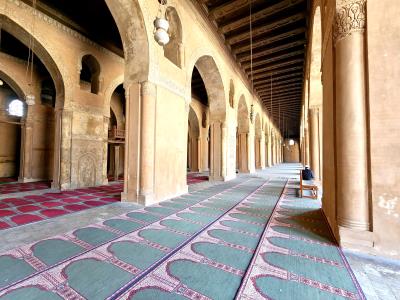
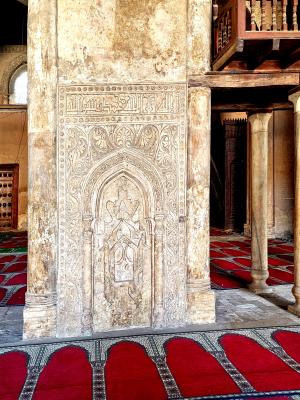
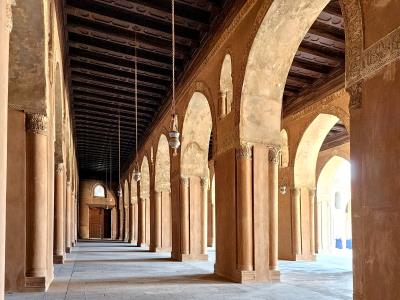
 Amir Aq Sunor Mosque - Aq-Sonqor - Blue Mosque
Amir Aq Sunor Mosque - Aq-Sonqor - Blue Mosque
The Blue Mosque, also known as the Aqsunqur Mosque, is the largest mosque in Cairo's Bab al-Wazir district and an outstanding example of early Mamluk religious architecture. It includes a mausoleum and an impressive prayer courtyard, which was built in 1347 by Amir Aqsunqur.
The mosque is also known as the "Blue Mosque" because of the blue tiles that cover its walls brought from the city of Iznik in Turkey. Between 1652 and 1654 Ibrahim Agha Mustahfizan decorated the building with blue and green tiles - hence the mosque's unofficial name as the Blue Mosque. The building had a restoration 2009-2012 by the Aga Khan Trust for Culture.
The mosque was closed for nearly 21 years since 1992 after the earthquake that struck Egypt that year, and it was restored over four years at a cost of $ 2 million, to be reopened again in 2013.
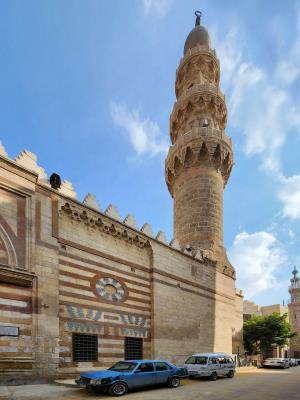
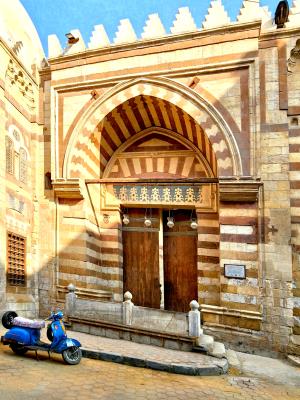
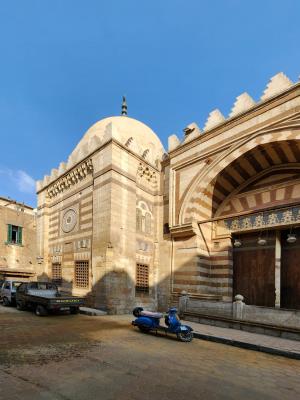
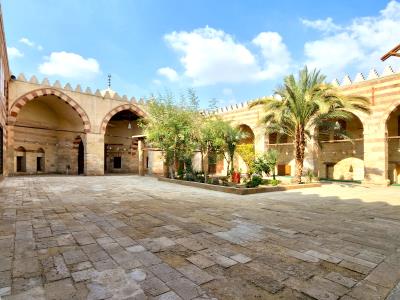
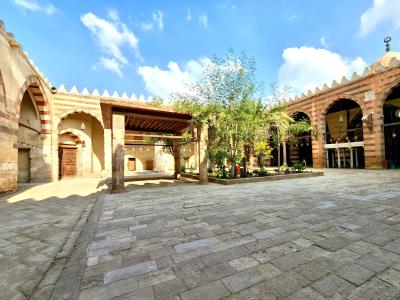
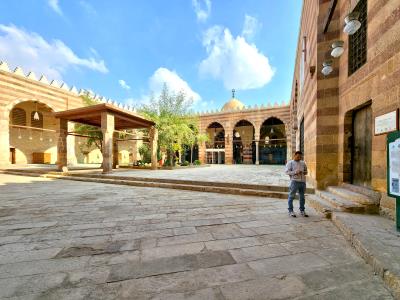
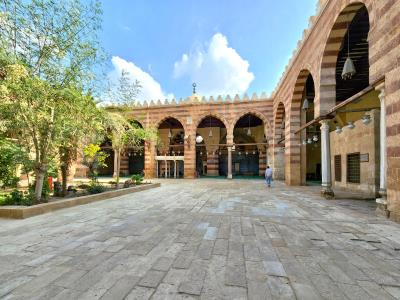
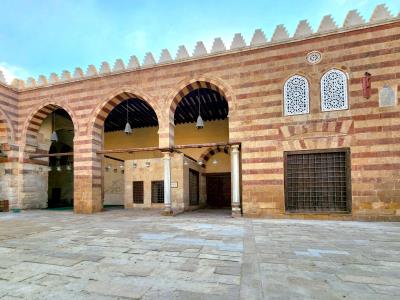
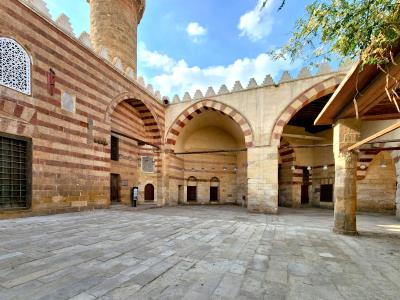
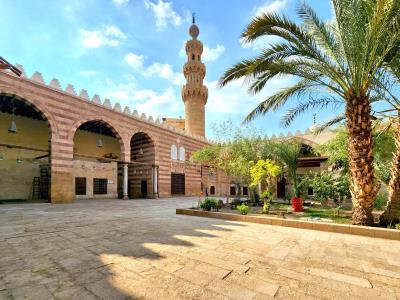
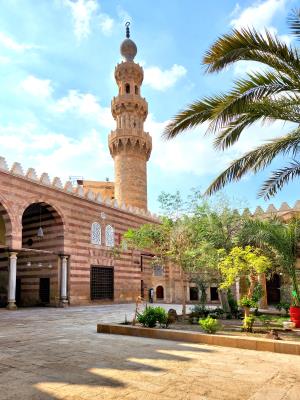
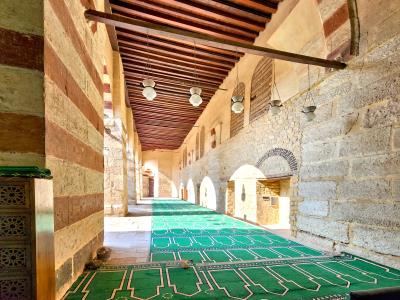
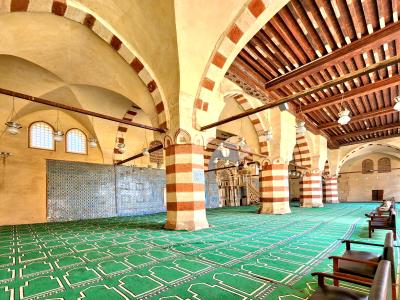
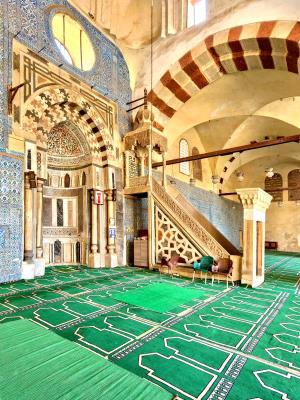
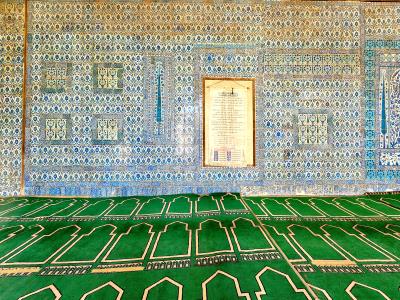
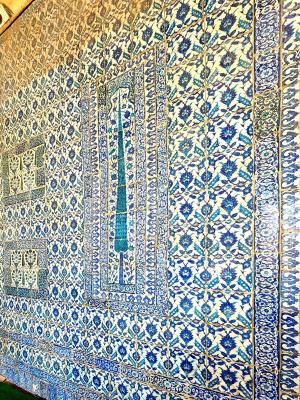
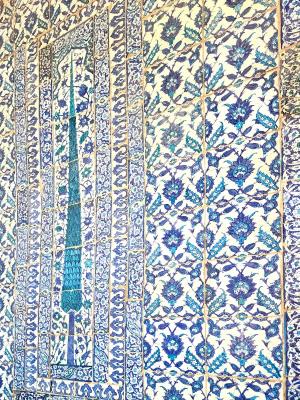
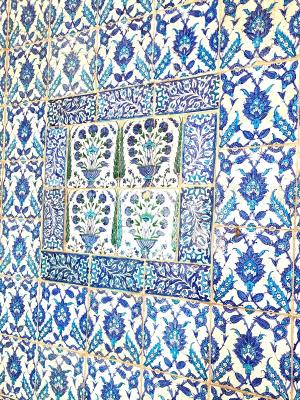
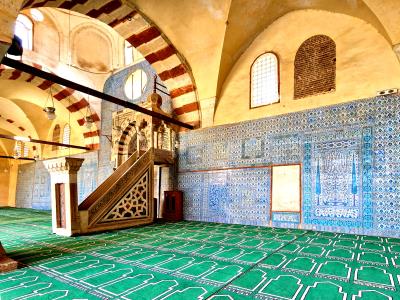
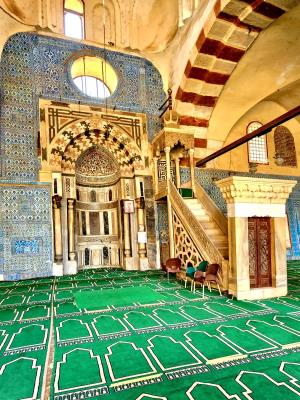
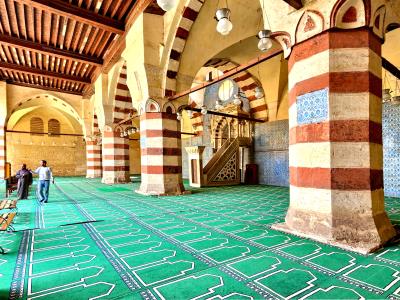
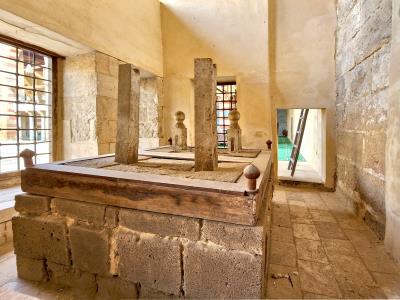
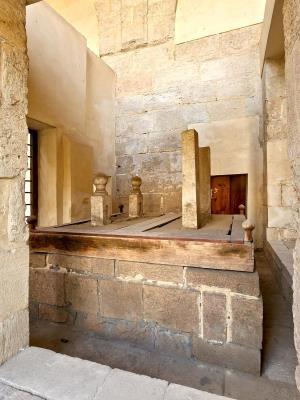
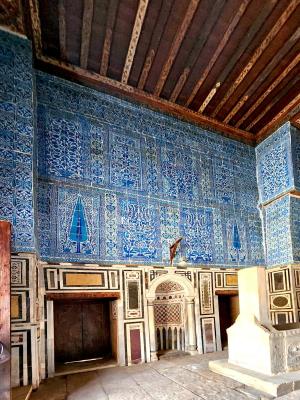
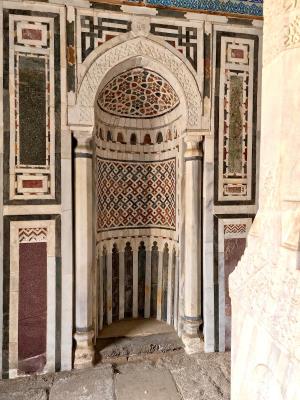
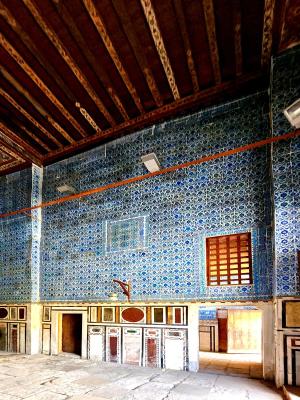
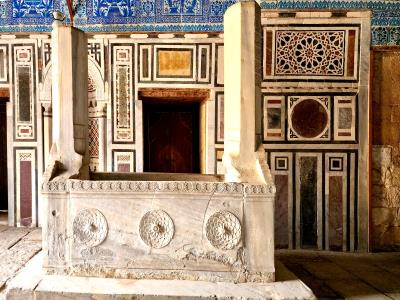
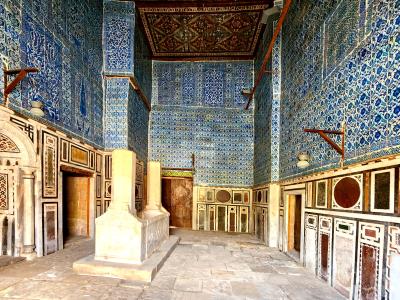
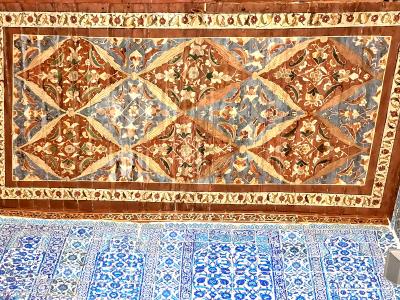
Garbage City
Garbage City has a large population of "Zabbaleen. The Zabbaleen are descendants of farmers who started migrating from Upper Egypt to Cairo in the 1940s. Fleeing poor harvests and poverty they came to the city looking for work and set-up makeshift settlements around the city. Initially, they stuck to their tradition of raising pigs, goats, chickens and other animals, but eventually found collecting and sorting of waste produced by the city residents more profitable. The Zabbaleen would sort through household garbage, salvaging and selling things of value, while the organic waste provided an excellent source of food for their animals. In fact, this arrangement worked so well, that successive waves of migrants came from Upper Egypt to live and work in the newly founded garbage villages of Cairo.
For years, the makeshift settlements of the Zabbaleen were moved around the city trying to avoid the municipal authorities. Finally, a large group of Zabbaleen settled under the cliffs of the Mokattam or Moquattam quarries at the eastern edge of the city, which has now grown from a population of 8,000 in the early 1980s, into the largest garbage collector community in Cairo, with 30,000 or more Zabbaleen inhabitants.
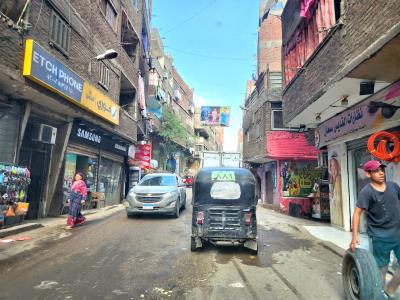
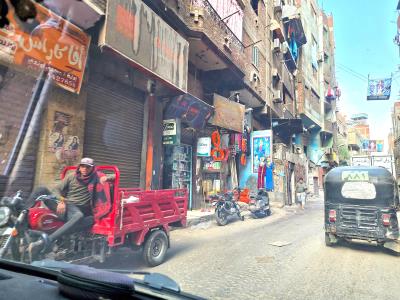
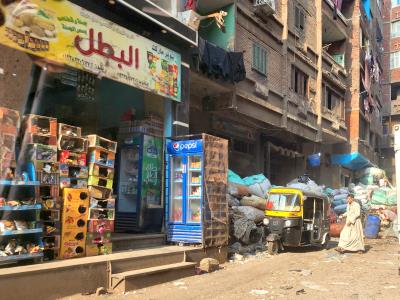
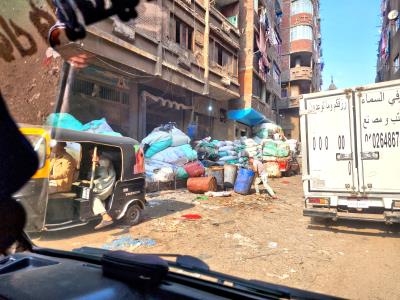
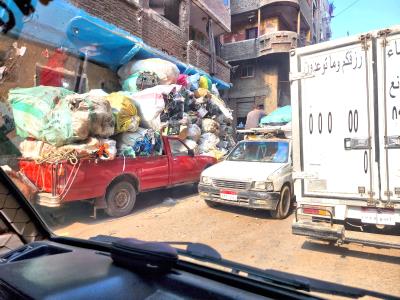
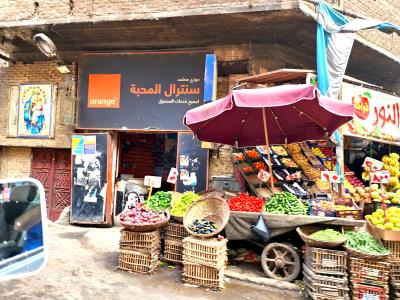
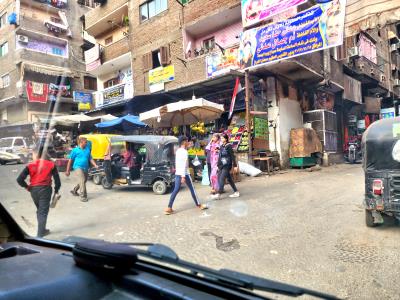
Video: Riding Through Garbage City
This is a brief glimpse at the drive through Garbage City. Unfortunately, no "smell-o-vision" so you can't get the full "atmosphere".
As the video shows, there is a stream of traffic through Garbage City but it flows nicely. After visiting the Cave Church and going back through Garbage City there was a real traffic jam - as slow, or more so, than in Cairo downtown. Seems an odd place for such heavy traffic.
Click [ ] icon for full screen
The Cave Church - Church of St. Simon the Tanner
The Monastery of Saint Simon, also known as the Cave Church, is located in the Mokattam mountain in southeastern Cairo, Egypt, in an area that is known as ‘garbage city’ because of the large population of garbage collectors or Zabbaleen that live there.
Egypt is a Muslim-majority country, but the Zabbaleen are Coptic Christians, at least, 90 percent of them are. Christian communities are rare to find in Egypt, so the Zabbaleen prefer to stay in Mokattam within their own religious community even though many of them could afford houses elsewhere.
The local Coptic Church in Mokattam Village was established in 1975. After the establishment of the church, the Zabbaleen felt more secure in their location and only then began to use more permanent building materials, such as stone and bricks, for their homes. Given their previous experience of eviction from Giza in 1970, the Zabbaleen had lived in temporary tin huts up till that point. In 1976, a large fire broke out in Manshiyat Nasir, which led to the beginning of the construction of the first church below the Mokattam mountain on a site of 1,000 square meters. Several more churches have been built into the caves found in Mokattam, of which the Monastery of St. Simon the Tanner is the largest. In fact, the Cave Church of St. Simon in Mokattam is the largest church in the Middle East.
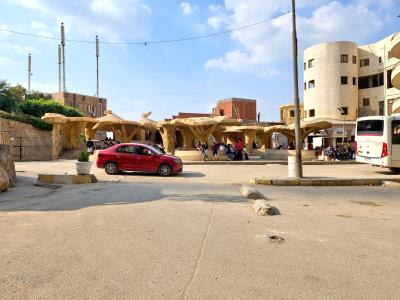
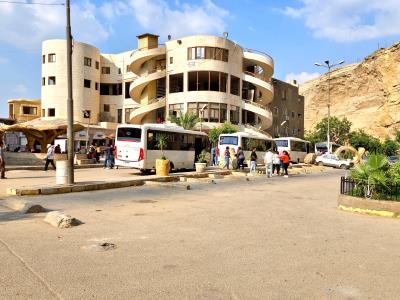
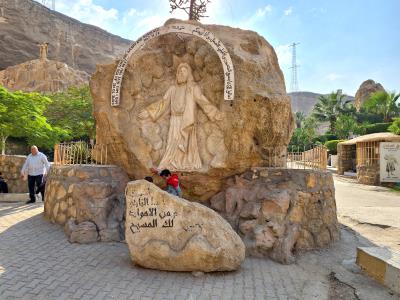
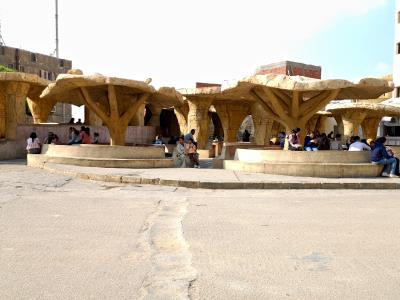
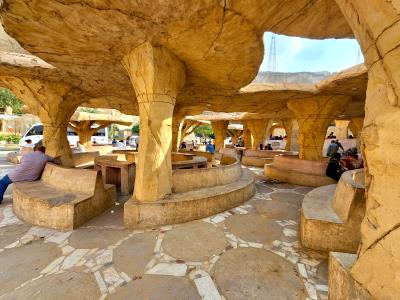
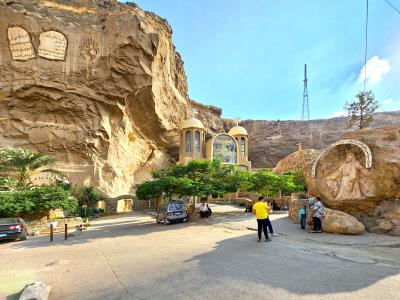
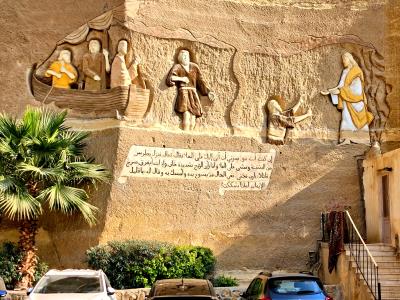
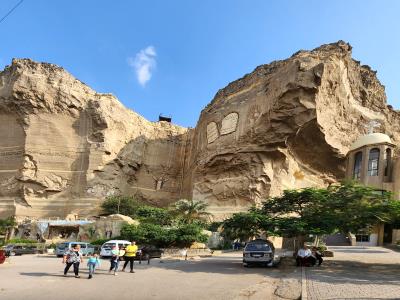
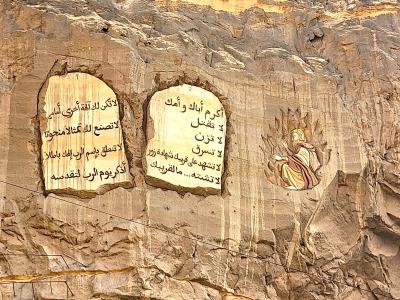
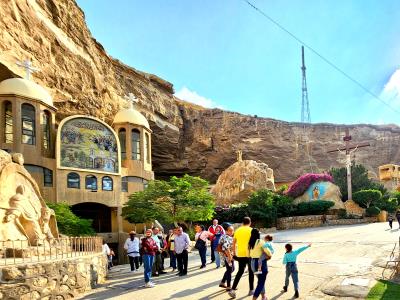
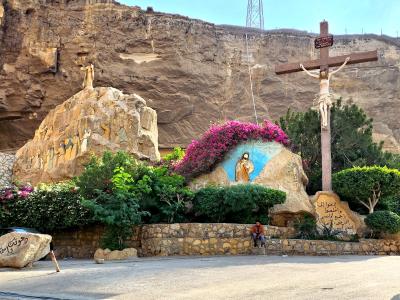
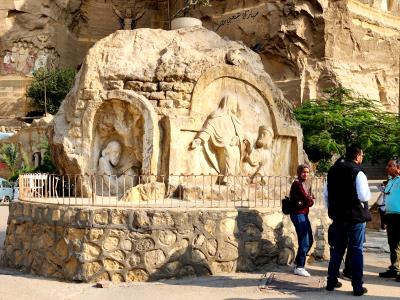
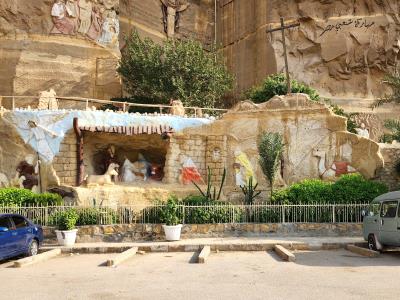
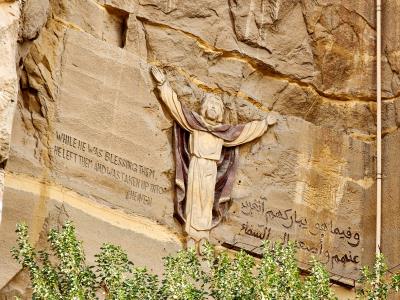
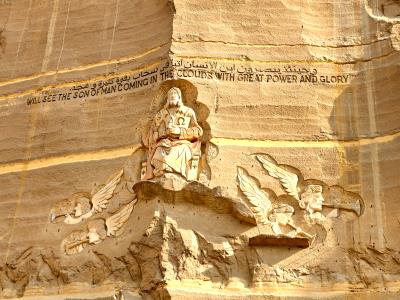
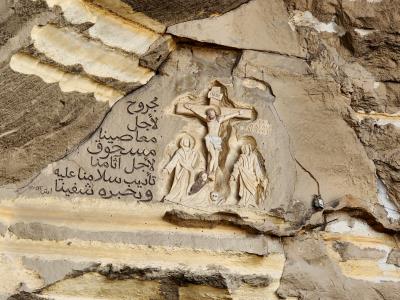

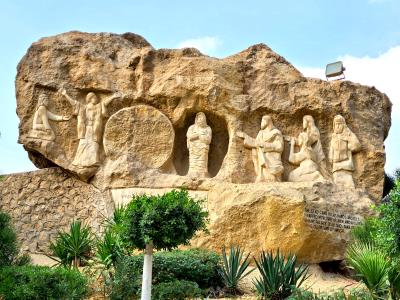
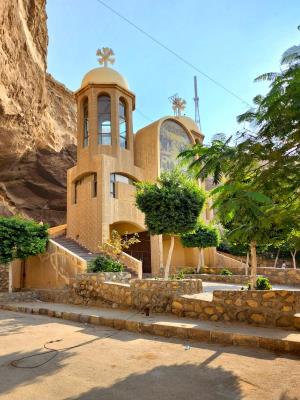
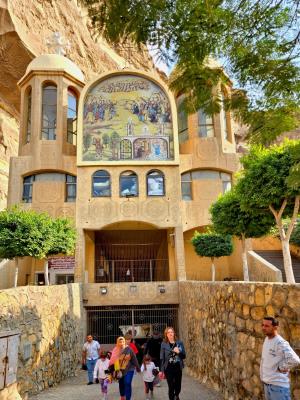
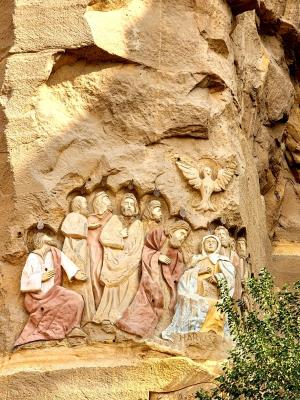
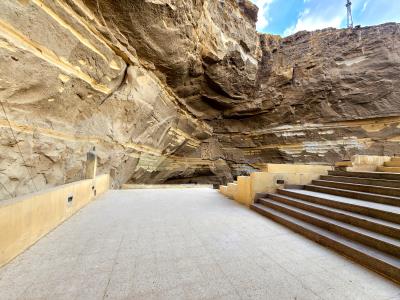
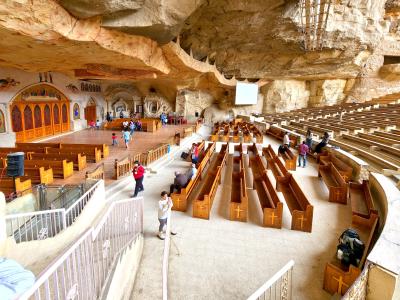
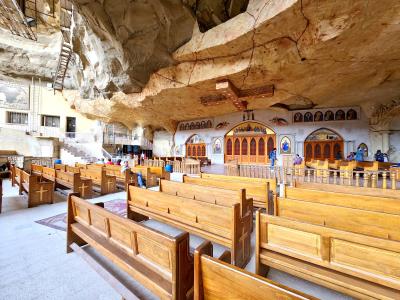
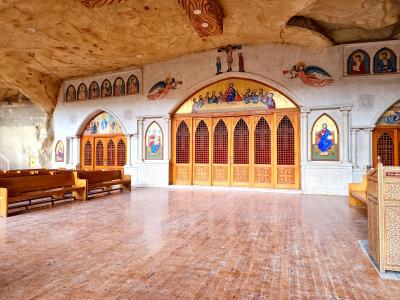
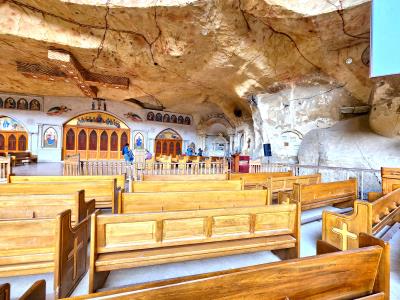
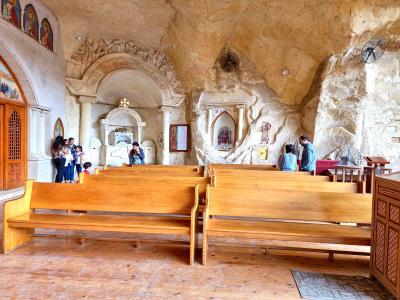
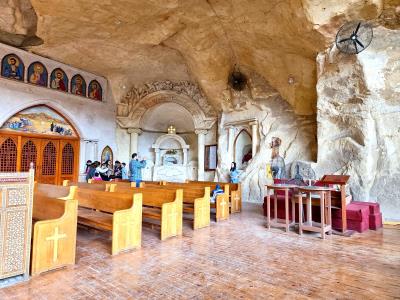
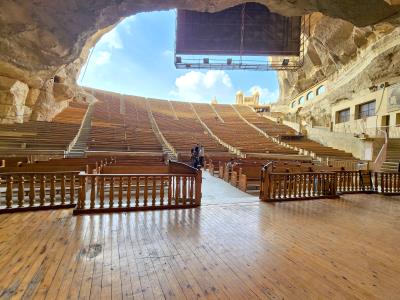
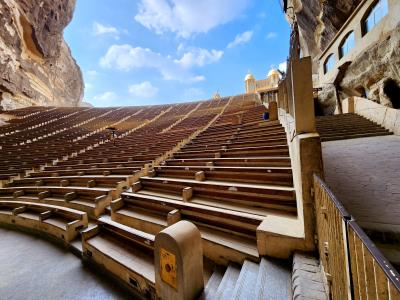
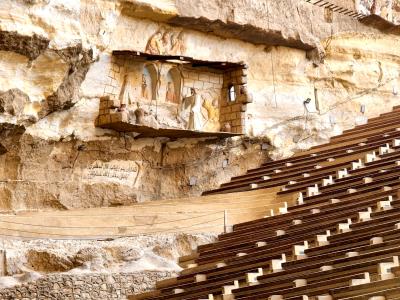
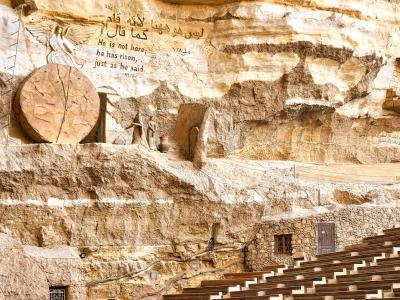
Church of Saint Marcus
A little walk to the side of the main Cave Church is this additional cave - much better protected from the weather.
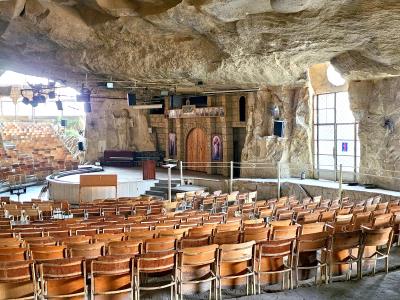
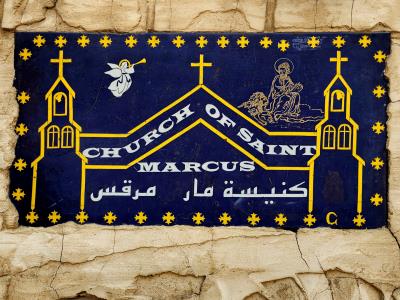
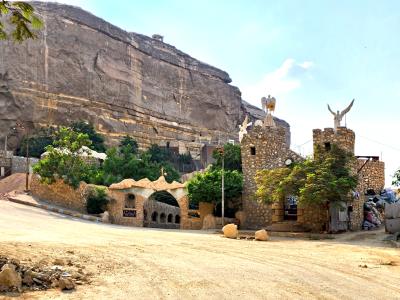
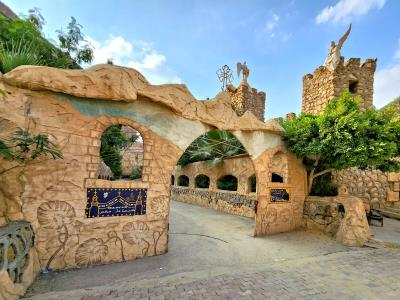
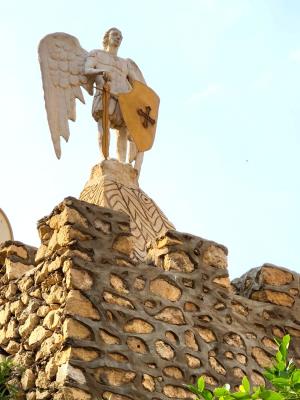
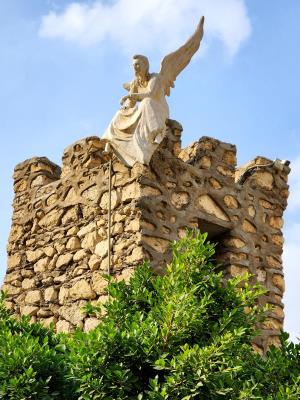
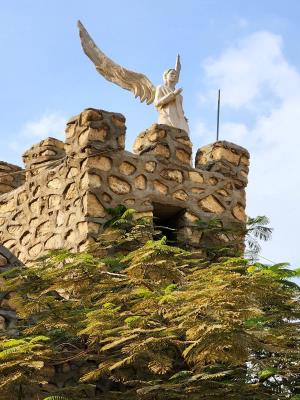
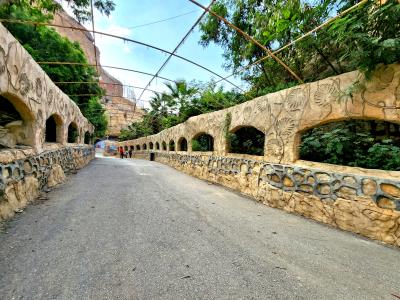
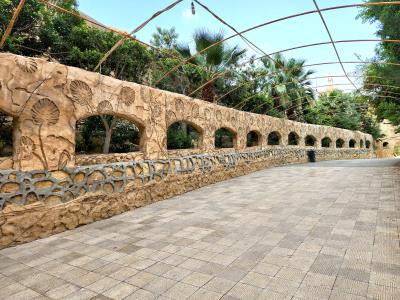
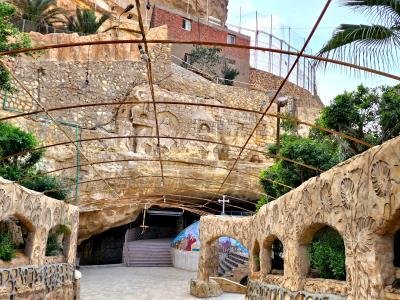
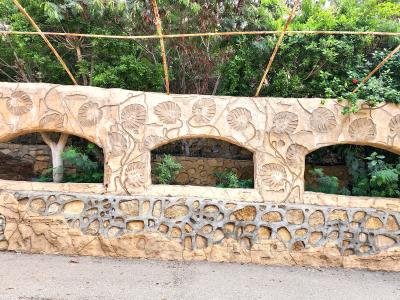
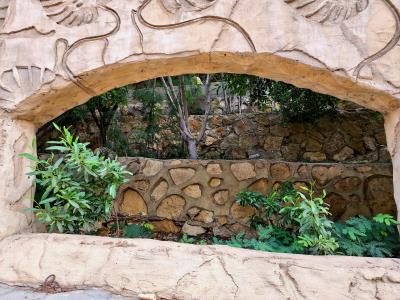
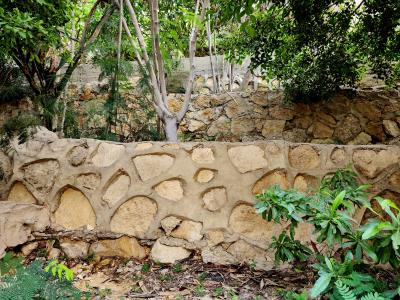
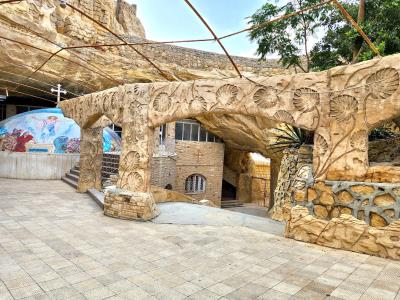
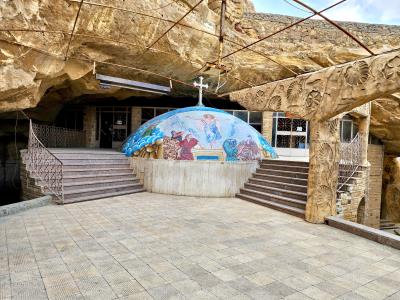
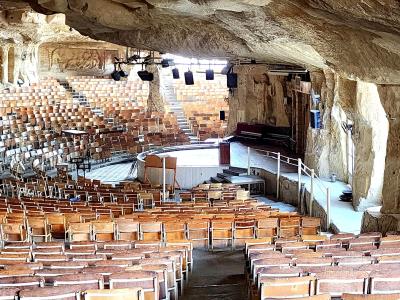
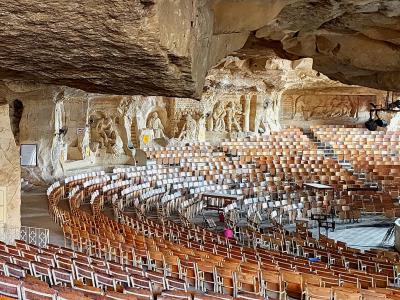
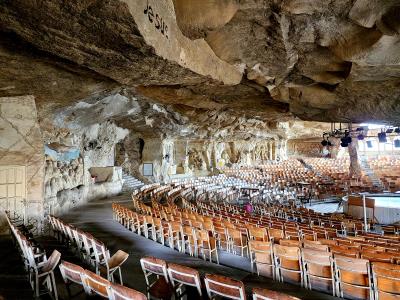
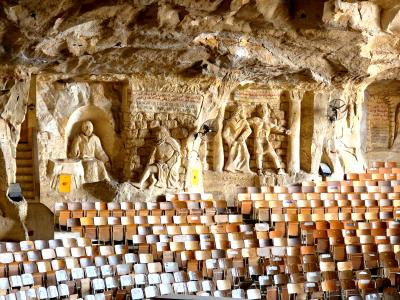
Cemetery of the Royal Family
Housh El Basha ("courtyard of the Pasha") is a mausoleum of the Royal Family of Muhammad Ali Pasha
